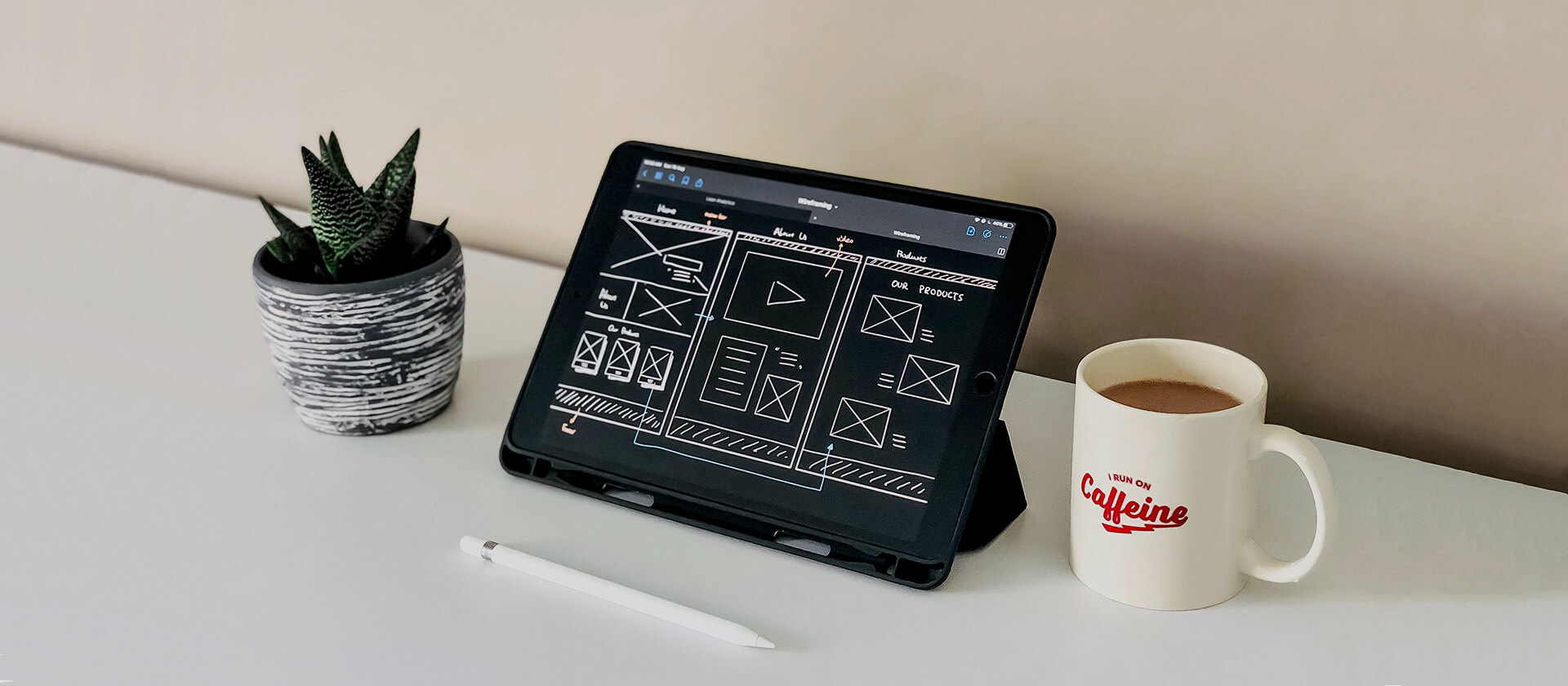Want a heads up when a new story drops? Subscribe here.
In response to the Coronavirus, governments and businesses have taken important steps of ensuring people are prepared and well-informed. Regulations are changing quickly and so are the economy, consumer behaviors, and daily routines. Business and marketing techniques are also demanding quick adjustments from entrepreneurs and business owners world-wide to meet the new demands of the post-Covid era.
To continue nurturing your long-term growth potential and help customers navigate through the current shopping environment, we have prepared a guide with new tools and techniques that can help your website be more user-friendly and helpful to web visitors.
Table of Contents
Тhe New Normal. Or is it that “new” really?

The first thing to consider is “life from home”. Work, entertainment, relaxation time, and connecting with family and friends for the past year have all been happening primarily from home. Covid-19 forced us to adjust our lives and find new ways to do everything, including more ecommerce shopping.
That trend to sell more products online and move businesses to ecommerce was underway already but 2020 propelled this trend to gain momentum even faster.
And for companies already selling online, that means evolving to accommodate the new needs of a post-Covid-19 consumer.
The change inevitably prompted new behavior and demands from customers that most likely will remain part of the purchasing experience long after Covid-19. A key to successful business planning post-Covid-19 is flexibility. The change in shopping habits needs to be reflected in new marketing and sales strategies. Brands that continuously assess and pivot in response to new consumer attitudes will be the ones successfully emerging in the uncharted territories of a post-Covid-19 market.
TIP: Every business starts by assessing its current online presence and how well does that fit in the new shopping ecosystem. Analyze where you currently stand in terms of motivating users to choose your brand, find weak spots on your website, and take steps towards changing or perhaps adding features that assist potential customers in their buying journey.
To keep engaging your users you have to create a web presence that is hard to ignore. Here are the top 5 features to add to your website and prepare for the post-Covid-19 era:

1. Data Gathering
Your website is the perfect data-gathering instrument. It can provide you with information on how users interact with your brand and how the website itself is performing. By implementing data analytic features you’ll be able to understand your users- demographics, preferences, behaviors, and interests. The data will show you what’s changed for online consumers post-Covid-19 and give ideas where you need to.
Fast-Loading
The gathered data is also useful when you’re assessing the technical performance of your website. Your loading speed should be a top priority for you, as users don’t think twice about abandoning websites that take too long to load.
Mobile Compatibility
A mobile version of your website was a nice thing to have even before Covid-19 hit, however, while people were under mandatory lock down the use of mobile devices surged significantly, making a mobile website an absolute necessity. Mobile usage jumped by an hour per day in 2020 as people found it more convenient to do most of their online browsing through their phones.
That trend will continue to determine the behavior of users in the post-Covid era, which means businesses need to pay more attention to how the mobile versions of their websites are performing. Measure and assess how your current mobile website is doing, test whether your designs are user-friendly and responsive, and whether users enjoy them. Implement features that will help you improve engagement like swiping functions, gestures. Consider using intuitive navigation and designs that predict how the user will interact with your mobile website.
Browser Uniformity & Accessibility
Often neglected, the compatibility of your website with all browsers is an important factor in how your website will be perceived by users. And although browsers are continuously being improved, it’s important to ensure your website runs smoothly on all of them so your users don’t experience any issues while trying to connect with your brand.
Accessibility for all types of users will also affect the performance of your website with users. Accommodating the needs of consumers will special needs will show your commitment to providing equally enjoyable experiences for all. Implement features that accommodate the needs of the elderly, disabled, and blind users to make your website a pleasant place to shop for every user. The 508 website accessibility guidelines show simple techniques you can apply in making sure your website can be accessed easily by any type of user.

2. Efficient Navigation
As things are slowly getting back on track and we’re returning to our normal lives the demand for an impeccable online experience remains. People still want to be sure they have safe and convenient options for shopping. That prompts every business to concentrate on improving the user’s experience on their websites. That means seamless browsing and easy-to-find information.
To stay on top of your online game, review your website and how well it’s equipped to help your customers deal with the changing times and still have an enjoyable time shopping online. Your website needs to be easy to navigate and help customers find relevant information.
A top navigation bar, for example, sets the tone of the webpage and helps convince people to stick around and learn more. Through your top navigation visitors can easily understand what the site offers within seconds of loading. Add menus and action buttons that will show visitors how to go to the page with the information they’re looking for.
If you want a more daring and striking design that will attract attention- try a sidebar with similar action buttons menus. Less used, a sidebar gives your website a more unique and memorable look that users find interesting.
Similarly, to the top navigation bar, adding footer features is a great way to give visitors additional information about your business- menus with terms and conditions, delivery, address, and if you haven’t yet linked to a map with your address pinned, for a better visual representation now it’s the time to do so.
In case your business works with order pickups put your working hours in the footer, and link to a page with Covid-19 related health safety measures. We might be entering a post-pandemic era but we still need to be careful and ensure customers feel protected when shopping.
Another feature your website will benefit from is the breadcrumb navigation functionality. Breadcrumbs help users know where on your website they’re at a given moment, so they don’t get overwhelmed while jumping from page to page and getting lost in the process. Breadcrumb navigation is also beneficial for SEO as it helps search engines figure out the structure of your website and improve your ranking.

3. Relevant & Easy to Scan Content
Updated and relevant content is another vital feature your website can’t go without in a post-Covid era. Today, customers are invested in finding out the best products and are looking for brands engaged with social and environmental issues.
To ensure you deliver what your customers are looking for review your content, fonts, photos, menus, product portfolios, FAQ sections, and other business information that might be relevant to prospects and clients. Determine what needs to be edited, added, or removed and create content that is helpful and shows users who you are and how your brand is helping them achieve their goals.
Bear in mind formatting your content is also very important. Use headers, sub-headers, paragraphs, and bulleted lists to visually break up the text. All this helps readers scan the information and improve search engine rankings.
Videos
Creating videos you can upload both to your website and social media is another terrific way to engage with consumers and help your SEO. Videos can be created around client experiences with your brand, or you can film your employees sharing knowledge of your brand’s culture, product, or service, and your whole company. Users prefer content that is easy to digest and they can easily share and videos are one way to keep them engage and browsing longer on your website.
Social Media
In 2020, about 22% more adults were interested in buying through social media compared to 2019. The stay-at-home mandate pushed businesses to build an even stronger social media presence that they can seamlessly integrate into their website.
A cross-channel marketing strategy is something that will remain a competitive advantage for any brand to have in the post-Covid-19 times. Adding social media features to your website, like share buttons on blog posts, e-books, newsletters, will make it easier for users to share content they like and help you reach more people. Additionally, you should add buttons linking to all your social media profiles and position them at an easy-to-spot place on your header, or footer.
Calls to Actions
Don’t forget to update your calls to action. You might be running new initiatives, now that quarantine measures are being lifted, so direct people to the places they can find more information like your blog section. Or you can ask them to sign up for your updated newsletters, contact forms, or notifications on re-openings and special discounts.
Comments & Reviews
If you haven’t yet added a comment and rating features on your website blog you should consider integrating them now. Immediate feedback from your customers will show people you care for their opinion and as a bonus will give you quick tips on what consumers post-Covid-19 are interested in experiencing while browsing, reading your blog posts, or placing orders.
Client Testimonials
Uploading new testimonials from customers, especially ones that show how clients reviewed your services during Covid will help show your users how you’ve managed to continue delivering good products and impeccable service despite the difficult situation. That will give confidence to new potential clients that you can handle the changing demands of the market.
Deliveries
Covid-19 has pushed for some changes in delivery services as well. Just in April 2020, there was a huge increase – 208% of curbside pickups compared to April 2019. If your business does order pickups state clearly on your website how you deal with deliveries. Communicate your working hours and how you’re organizing the order pick-ups, mentioning all the Covid prompt safety measures your business is following still.
Re-confirm your shop addresses, mention everything that might concern your customers like change in working hours, scheduled re-openings, and everything else that you do to ensure risk-free goods collection.

4. Brand Activism
Consumers today expect brands to not only offer useful products but implement sustainability practices in their production processes. Quarantine gave people enough time to research and learn how products are made and how services businesses offer help communities. Their research inevitably leads them to the brand’s website and the content created around those issues. Any brand that wishes to impact the new generation of consumers needs to curate online content that answers how their products and services are made and what’s their impact on the environment and the lives of people.
Matching a brand’s products, services, and ethical standards to those of users has been an important factor in purchasing decisions. For example, even before Covid and the focused attention of the at-home buyers, 40% of GenZ buyers have boycotted a brand that doesn’t follow sustainable standards.
The demand for businesses to have and apply sustainability policies will only increase in importance for the consumers of the post-Covid era. Brands that follow those policies need to make sure they’re spreading the word of the sustainability actions they’re taking-starting from their website.
Creating a specific landing page that discusses the eco-conscious and fair practices you’re implementing in your business is a great feature to add to your website. There you can cover everything that relates to sustainability values your brand shares, how you’ve grown over the years, and what future initiatives you plan on taking to improve your carbon footprint and social engagement.

5. Virtual Reality & Smart Chatbots
As Covid spread and we were confined in our homes, the businesses relied primarily on their websites to generate sales, and needless to say, setting an attractive online shop was the absolute necessity. Every type of business had to adopt new and more secure ways of selling their products and services and be creative when coming up with online shopping options and customer service. Technology developments became a handy tool for improving online experiences. Retail brands utilizing smart fitting rooms, for example, offered a convenient and safe way for consumers to virtually try on the products- saving time and costs on shipping and returns.
The trend of adding smart features to boost online engagement will continue in the post-Covid-19 era -giving brands using virtual reality (VR) and augmented reality (AR) experiences on their websites, a competitive advantage with their customers. Ikea for example utilizes AR to help you place furniture in your home – a convenient and useful feature to build the perfect interior, helping Ikea entice users to spend more time engaging with their products.
Post-Covid we’ll see more businesses adopting technology to personalize shopping, use AG and VR to create immersive shopping experiences, and boost engagement.
Another way to update your website and match current demands is using artificial intelligence in customer-facing chatbots. Smart chatbots are a great tool for assisted shopping and will be there to answer your customers’ questions immediately, and navigate users through the buying process.
In fact, AI chatbots are in a such demand that according to statistics is 41% of customers expect you to have live chats on your website.
Online shopping as the new standard in a post-Covid-19 era demands an impeccable user experience delivered first through the brand’s website. A business website is of utmost importance as it’s the place that users turn to learn all about the brand, its social and environmental engagement. Delivering an impeccable and pleasant experience with quality content, easy to navigate menus, sharing options, and universal accessibility is what influences consumers when they make their purchasing decision. Checking all the boxes and implementing website features to accommodate all that is vital for your business and keeps you relevant and competitive.




